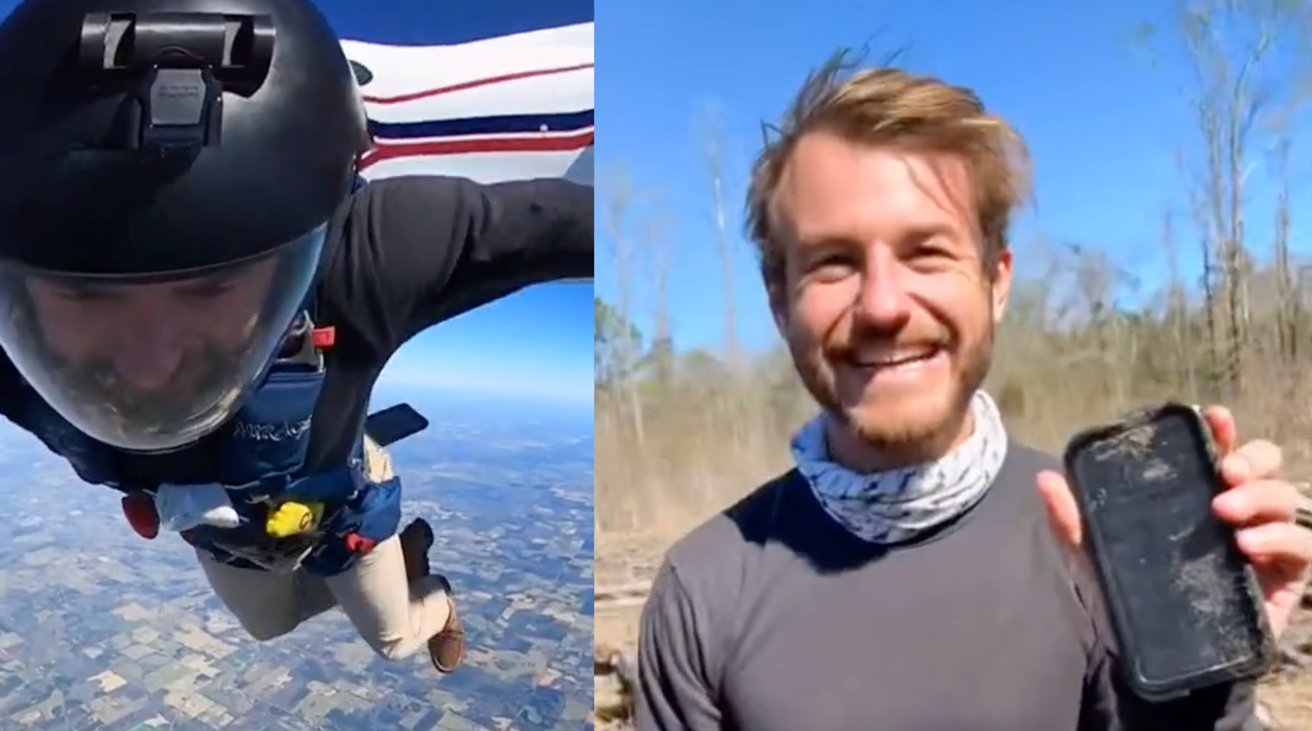A TikTok video shows a skydiver dropping his iPhone from a plane during a dive, with it somehow surviving the 14,000-foot fall to the ground.
Dropping an iPhone can be a fear-filled occasion for most users, worrying over potential cracks to the screen or other damage. In a video doing the rounds on TikTok, a skydiver showed what could possibly be the most extreme version of that situation.
Published to the video-sharing service on February 20, the video by Hatton Smith titled "When your phone falls out of your pocket at 14,000 feet" shows him leaping from a plane, and quickly being separated from his device just after exiting. The iPhone is seen to spin and flutter away from the camera at speed.
The short video cuts to a shot of the iPhone, partially wedged into the ground "like Excalibur" as one off-screen voice put it. The iPhone is then pulled from the ground and deemed "completely fine."
It is unclear what model of iPhone was shown, but it was placed inside a reasonably rugged case. More importantly for its survival, the iPhone landed in ground that was very muddy, giving it a softer landing than typical.
While Apple doesn't offer a height the iPhones can survive a drop from, most rugged cases are marketed as capable of fending off a drop of about 6 feet.
This is far from the first instance of an iPhone being dropped by a skydiver during a dive, but the survival makes it a rarity. The iPhone has also encountered other tough survival situations over the years, including numerous instances of being submerged in lakes for long stretches of time.
Much like a rollercoaster or other high-octane activity, AppleInsider recommends participants stow their iPhones and other valuables safely and securely, preferably away from any activity that may cause damage or loss of the devices.
 Malcolm Owen
Malcolm Owen







-m.jpg)






 Christine McKee
Christine McKee
 Amber Neely
Amber Neely
 Andrew Orr
Andrew Orr

 Sponsored Content
Sponsored Content

 William Gallagher
William Gallagher







28 Comments
Running this info thru a terminal velocity calculator: iPhone 14 pro max is 8 oz, drop height 14,000 ft, air drag, .2 kg/m.
1,400 seconds to hit ground, maximum velocity 3 m/s, terminal velocity also 3 m/s.